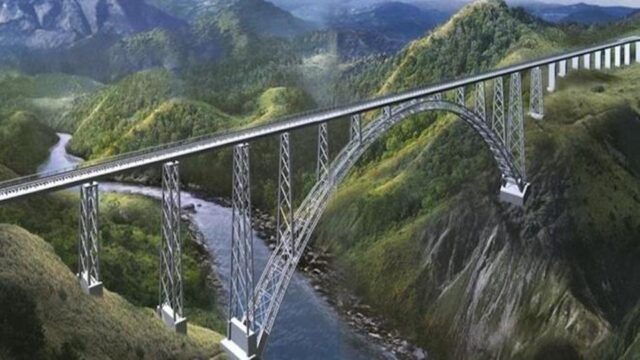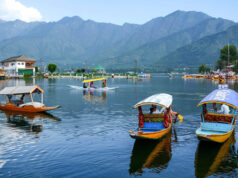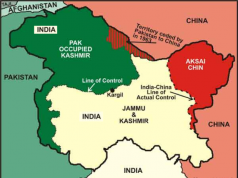

Connecting lands beyond rivers, deserts, mountains and ravines has been an arduous journey and the great Himalayan range has presented a unique challenge, quite literally stopping the Indian railways in its tracks. But what seemed like an insurmountable challenge has finally been overcome in Jammu and Kashmir.
A small 5.6-metre steel arch, became the final piece of a bridge over the Chenab river on the Udhampur-Srinagar-Baramulla rail link project in Jammu and Kashmir. With this last link, connecting the two arms rising from the mountains over a deep gorge, the world’s tallest railway bridge was completed in April 2021. Built at a height of 359 metres, the bridge is taller than the Eiffel tower. An engineering marvel and awe- inspiring to behold, its curved spine may not be for those faint of heart.
The ambitious Udhampur-Srinagar-Baramulla rail link project once completed will finally connect the Kashmir valley to the plains through a train network, making the movement of people and freight that much easier. Most of the track is ready except for the link between the towns of Katra and Banihal. Though this stretch of track is no more than 111 km long, but as much as 97.34 km of this is made up of tunnels.
Reaching the beautiful valleys of Kashmir has never been an easy task. Scaling mountains, squeezing through passes, avoiding possible landslides and avalanches has always made the journey treacherous and tiresome.
Before the trains start chugging on the Udhampur – Baramulla link, an 8.5 km all- weather hi-tech tunnel connecting Qazigund and Banihal in Jammu & Kashmir is expected to open this year for public. The tunnel will keep Kashmir connected to the rest of the country throughout year. Work on the tunnel started nearly a decade ago to replace an existing tunnel in the region which was prone to avalanches, leading to closure and bottlenecks on the highway. With a cost of nearly 300 million USD, this new tunnel is built at an elevation of 1,790 metres, 400 metres below the existing tunnel to reduce the threat of avalanches.
Cutting through the rocky terrain and braving the fickle weather has made construction of any infrastructure in the region a technical and manpower challenge. But unwavering commitment towards policy goals and successive technical advancements have led to creation of substantial infrastructural development in Jammu and Kashmir.
Within the last year, Jammu and Kashmir has emerged as one of the best performing region in India for developing the highest road length. For the next year too, Jammu and Kashmir is planning to invest over 300 million USD in building and revamping its road infrastructure.
Another area wherein new developments have changed the landscape of Jammu and Kashmir is hydro-power. Despite a growing economy, for years India has been committed to the goal of clean and renewable energy. Fortunately, India is rich in fast- flowing rivers that cascade down from the mighty Himalayas – the vast water towers of Asia – and have huge potential for generating clean and renewable energy. But, building hydro-power projects in the fragile, geologically-young Himalayas is not easy, and only a fourth of India’s enormous hydro-power potential has been harnessed so far.
The answer to overcome these challenges has been ‘run-of-the-river’ hydro-power which generate clean electricity with a minimal impact on the environment. After the success of such projects in the northern state of Himachal Pradesh, the Indian Government is keep to replicate the model in Jammu and Kashmir. Recently a series of agreements signed to construct run of the river project on the Indus river tributaries.
This development spree in the region has come after a long hiatus as political instability in the region stifled growth for decades. After a constitutional amendment in India brought Jammu and Kashmir under the administration of the central Government in Delhi, the Indian Government has laid down an ambitious plan for the region’s development. Even the COVID-19 pandemic has not been able to dampen the enthusiasm for creating new infrastructure in the region. Past months have seen announcement of a maiden gas-pipeline, development of Srinagar, the largest city in the region as a ‘smart-city’, construction of new schools and hospitals.










